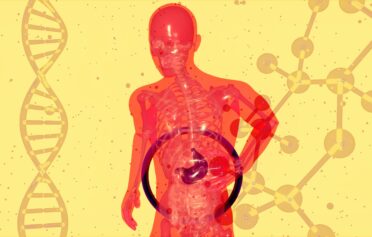
What is ultra-processed food and is it bad for your health?
Ultra-processed food has become a hot topic among dietitians and health experts. So, what are ultra-processed foods, are they bad for your health, and what are the most common ultra-processed foods in UK shops?
If you have a BMI over 35 and at least one relevant comorbidity, you could be eligible for referral to Oviva’s NHS-funded weight management service – you’ll receive coaching to help identify your best diet for loss and, if appropriate, NHS prescription weight loss medication.
Key Takeaways
- Ultra-processed foods are foods that have been significantly altered from their original form through industrial processes.
- Examples of ultra-processed foods are ready meals, many breakfast cereals, biscuits, ice cream, chocolate bars, sweets, crisps, fizzy drinks, sausages, and bacon.
- Consumption of a high number of ultra-processed foods is linked to various health concerns, including obesity, diabetes and poor heart health.
- Try to switch to unprocessed or minimally processed alternatives.
What are ultra-processed foods?
To understand ultra-processed food, it’s essential to understand food processing more generally.
Processed food has been changed from its original form in some way.
A certain amount of food processing can sometimes be beneficial for food quality and safety, so processing is not necessarily a problem in and of itself.
For instance, pasteurisation removes harmful bacteria, while some foods, like tinned tomatoes, are fortified with iron or calcium to make them last longer.
Ultra-processed foods have been processed significantly more than other foods. This means they are vastly removed from the whole foods they may have come from and often contain ingredients you will not find in your kitchen at home. These can include preservatives, artificial colours and flavours, sweeteners, stabilisers, and emulsifiers.
With this in mind, a good way to think of ultra-processed foods is foods you’d typically be unable to recreate in your kitchen.
Some common characteristics of ultra-processed foods include a long shelf life and being hyper-palatable. Hyper-palatable foods (HPFs) contain high fat, salt, sugar and carbohydrates. Examples include burgers, hot dogs, crisps and cakes. These foods stimulate the brain’s reward system, increasing the desire to eat.

NOVA Classification System
The NOVA classification system is one method for defining ultra-processed foods. It categorises foods according to the extent of processing they undergo.
The NOVA system is relatively new, and some parts of it are still debated in nutrition science. However, it still serves as a good guide to the level of processing in foods.
The NOVA classification system divides foods into four categories:
Group 1: Unprocessed and minimally processed foods
Foods in this category can be broadly considered natural foods.
They may undergo a small amount of processing, such as filtering, pasteurising, crushing, grinding, drying, cooking, or removing inedible parts, but they’re primarily plant-based or animal-derived foods.
Unprocessed or minimally-processed food examples:
- Unprocessed meat
- Fruit
- Vegetables
- Nuts
- Eggs
- Water
How healthy they are: We should be eating more of these foods as they are nutritional and beneficial.
Daily recommendation: No limits; these should form the foundation of your diet.
Group 2: Processed culinary ingredients
Products in this category are processed ingredients used to prepare or season foods. When used in moderation, they can form part of a balanced diet.
Processed culinary ingredient examples:
- Butter
- Honey
- Natural syrups
- Olive oil
- Sunflower oil
- Sea salt
- Cane and beet sugars
How healthy they are: Use sparingly to help meet your health goals.
Daily recommendation: Moderate use is recommended. Aim to limit these foods to small portions to support overall health.

Group 3: Processed foods
Foods in this category have been modified from their natural form.
They’re often a combination of foods in group 1 and ingredients in group 2, with processed ingredients added to extend the shelf life of the food or enhance its taste.
Processed food examples:
- Cured meat
- Salted nuts
- Tinned foods preserved in vinegar or brine
- Homemade bread
How healthy they are: These foods can be a useful source of nutrition, especially for families on a budget. Take a look at the ingredients first – are they high in unhealthy fats, salt, and calories?
Daily recommendation: Consider their nutritional value and limit frequency and amounts as needed. Focus on including items that provide protein and fibre (e.g., baked beans) while being mindful of those high in fat and salt.
Group 4: Ultra-processed foods
Foods in this category have been significantly modified through industrial processes.
They typically contain multiple ingredients not found in a typical kitchen cupboard and are difficult or impossible to recreate at home. They often contain food additives and artificial flavours.
When exploring ultra-processed foods vs processed foods, the most significant distinction is that ultra-processed foods are industrial formulations.
Group 1 foods (unprocessed or minimally processed) make up a small proportion of the final product’s ingredients, if they’re present at all.
Ultra-processed food examples:
- Pre-prepared pizzas
- Burgers
- Carbonated soft drinks
- Ice cream
- Sweets
- Some breakfast cereals
- Biscuits
- Chocolate
- Milkshakes
- Crisps
- Pastries
- Sausages and other processed meat products such as chicken nuggets.
How healthy they are: These foods are unhealthy.
Daily recommendation: Once a month is a good general guideline. Be cautious with portion sizes; consider making homemade alternatives or pairing them with healthier options (e.g., a side salad).
Examples of ultra-processed foods
Identifying ultra-processed foods is not always easy, and many people consume various foods without considering how they’re made.
In the table below, you’ll find a more comprehensive ultra-processed foods list, broken down by food type:
| Food Category | Examples |
| Drinks | Energy drinks
Carbonated soft drinks Milkshakes Sugary fruit-flavoured drinks Sports drinks Bottled tea and coffee |
| Snacks | Crisps
Ice cream Cakes Biscuits Chocolate bars Sweets Fruit yoghurts Cereal bars Corn-based snacks |
| Ready meals | Microwave ready meals
Instant noodles Frozen pizzas |
| Processed meats | Sausages
Pre-made burgers Ham Bacon Chicken nuggets Hot dogs |
| Other items | Pastries
Instant sauces Margarine Most cereals Vegan meat alternatives Vegan cheese alternatives Jars of sauce |

What are the most ultra-processed foods?
The most ultra-processed foods have been changed substantially from their original form through industrial processes, often decreasing nutrition.
Examples of the most ultra-processed include:
- Sweets
- Ready meals
- Sausages
- Bacon
- Highly-processed breakfast cereals (e.g. Coco Pops and Lucky Charms)
- Energy drinks
What makes ultra-processed foods different?
So, how do ultra-processed foods differ from other food categories? They have been significantly altered from their original form through industrial processes and may not resemble natural foods. The ratio of NOVA group 1 ingredients is smaller than in processed foods.
Many ultra-processed foods are high in unhealthy fats, sugars, and salts while often low in essential and beneficial nutrients. A significant number are hyper-palatable, which can trigger reward systems in the brain and potentially contribute to binge eating.
Is ultra-processed food bad for you?
Links between eating ultra-processed foods and health consequences have come under increased scrutiny. Several studies have highlighted the dangers of ultra-processed foods, especially when eaten too frequently.
A five-year study (Bernard Srour et al.) published in 2019 found that consuming more ultra-processed food was linked with a greater overall risk of cardiovascular disease.
A meta-analysis published in 2024 examined various studies that connected a high intake of ultra-processed foods with obesity, diabetes, and depression.
None of these studies demonstrated any beneficial health outcome associated with a high intake of these foods.
Finally, a 2018 study (Thibault Fiolet et al.) found a link between higher consumption of ultra-processed foods and an elevated cancer risk. The study concluded that a 10% increase in ultra-processed food intake was associated with more than a 10% increase in cancer risk.

How to identify ultra-processed foods to avoid
Reducing the amount of ultra-processed foods you eat can help you to lose weight sustainably.
An excellent way to identify ultra-processed foods is to check food labels and ingredient lists. If you see many ingredients you do not recognise, you can usually assume the food is ultra-processed.
Other tell-tale signs of ultra-processed foods include a long shelf life and the presence of artificial flavourings, additives and preservatives.
You can also think of ultra-processed foods as foods you couldn’t recreate at home.
Healthier alternatives to ultra-processed foods
Various healthy alternatives to ultra-processed foods include:
- Fresh fruits
- Vegetables
- Natural yoghurts
- Whole grains
- Minimally-processed cereals (e.g., sugar-free muesli to replace processed cereals)
- Cuts of lean meat (e.g., chicken breast)
- Unsalted mixed nuts
These healthier alternatives benefit weight loss because they tend to be more nutritious. They’re also less likely to be hyper-palatable: foods that trigger reward signals in the brain, which can lead to binge eating. Avoiding HPFs can assist with appetite control and regulation.
Practical tips for reducing ultra-processed foods
Cooking from scratch is an excellent way to avoid ultra-processed food rather than eating ready meals or takeaways. If you tend to opt for ready meals or takeaways to save time, looking for recipes that take under 15 minutes or batch cooking may be helpful.
When shopping, pay closer attention to food labels. If you don’t recognise some of the ingredients in packaged food, avoid purchasing it.
Buying healthy and easy-to-prepare snacks like fresh fruit, nuts, and vegetables can help control hunger and improve daily nutrition.

How Oviva can help you make healthier food choices
If you have a BMI over 35 and at least one weight-related health condition, you may be eligible for Oviva. Examples of relevant conditions include asthma, type 2 diabetes, pre-diabetes, sleep apnoea, heart disease, depression and polycystic ovary syndrome.
Our Tier 3 weight management programme includes personalised coaching, helping you to make better choices concerning diet and exercise to achieve sustainable weight loss. We can also offer prescription weight loss medication via the NHS, including Wegovy.
Our simple survey will tell you if you’re eligible. Then, you can ask your GP for a referral.








